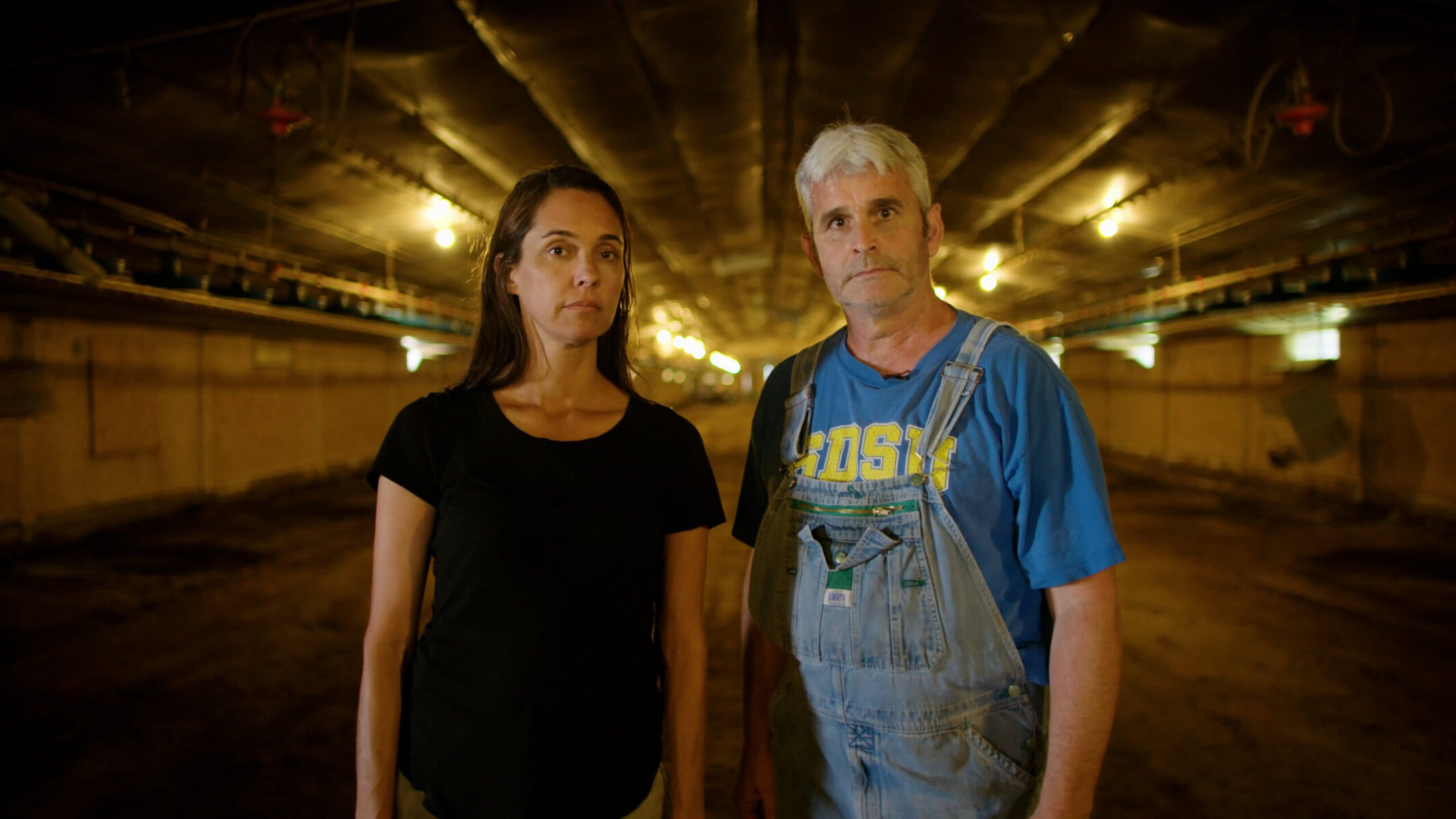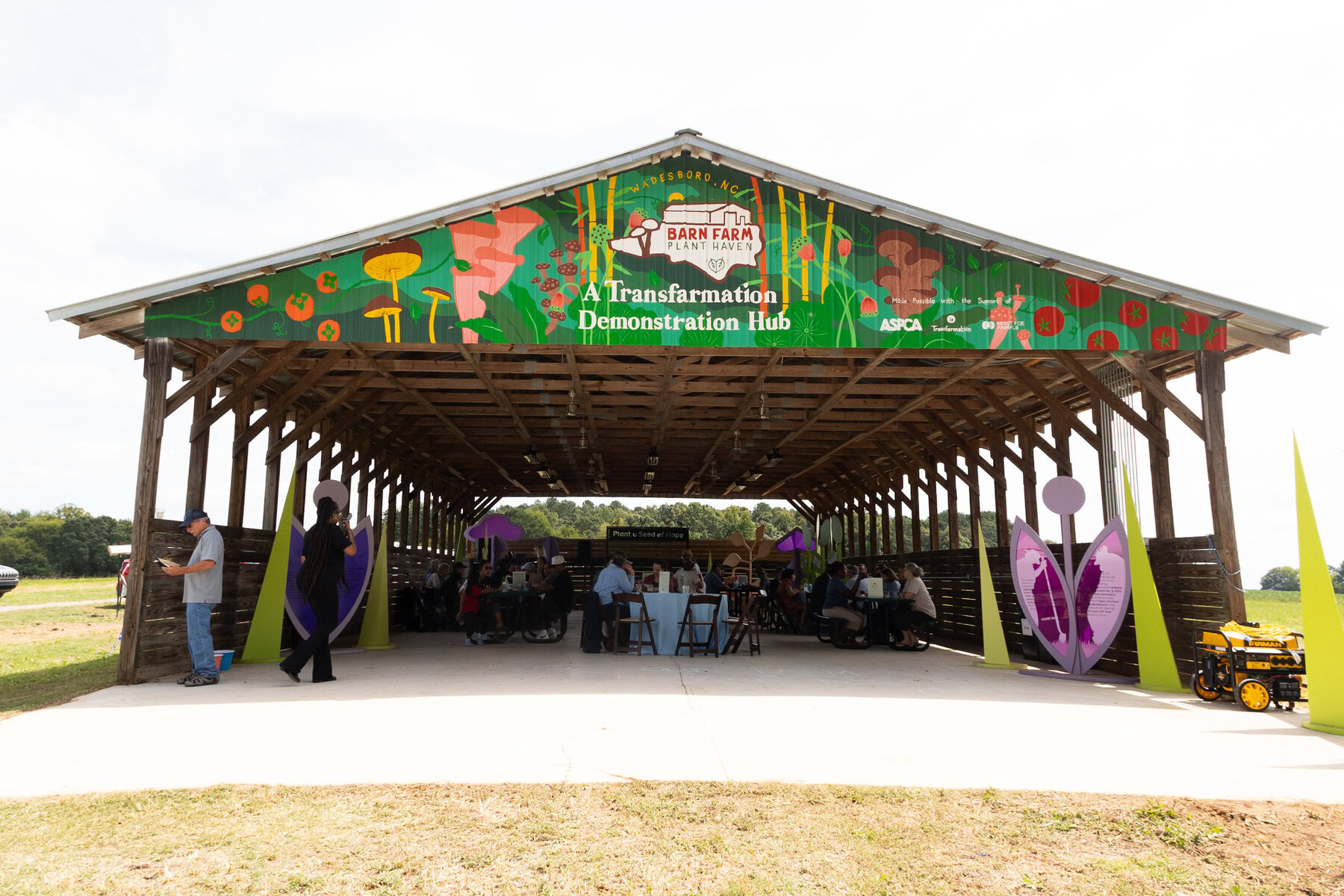By any definition, Leah Garcés considered Craig Watts her enemy. As CEO and president of the nonprofit Mercy for Animals, Garcés has devoted her life to protecting animals. When she met Watts in the spring of 2014 at his poultry farm in North Carolina, he was one those factory farmers she deeply despised. In fact, she was so worried that his invitation to meet was an ambush that she gave her husband the address with the reminder, “If I don’t come back, look for me rotting away in the chicken litter.”
Watts had raised over 720,000 chickens in 22 years for Perdue, the fourth-largest chicken company in the US. He had been searching for ways to stay on the family land in one of North Carolina’s poorest counties, and when Perdue offered him a contract to raise chickens, it sounded like a lucrative opportunity. He took out a $200,000 bank loan to build four giant chicken houses. But soon the chickens, crammed 25,000 wall-to-wall in the ammonia-laden air, started to become sick or died, and squeezed by Perdue’s profit margins, Watts struggled to pay the bills.

To her surprise, Garcés realized that Watts was not her enemy, but an ally: Chicken farmers like him wanted to end chicken farming as much as she did. He described the enormous toll this kind of farming took on his physical and mental health. Yet because of his hefty loans, Watts saw no way out. “I realized he was trapped in a system I am advocating against,” says Garcés. Their meeting in 2014 changed the trajectory of both their lives.
Together, they released footage from the horrors of chicken farming in the New York Times. In the first 24 hours, a million viewers saw the panting birds at Watts’s farm living in their own excrements. Two years later, the whistleblower quit the chicken business for good and took a paid job for the Socially Responsible Agriculture Project, warning other farmers not to trust the promises of the chicken industry while still paying off his debt from the chicken houses.
A farmer at heart, Watts has now become one of the poster farmers for the Transfarmation Project, which Garcés founded as an offshoot of the nonprofit Mercy for Animals in 2019. “I remember standing in his barn and thinking, could we make it into a strawberry farm? Repurpose the land?” Garcés shares. Watts started small by installing a 300-square-foot shipping container in his large poultry house with a small grant from the Transfarmation Project and cultivating specialty mushrooms like shiitake. He told Garcés he wanted his new operation “as removed from the industrial model as it can be,” while not abandoning farming: “It’s part of me, in the blood. It’s a calling. I like to watch things grow.”

Garcés describes the story of how she helped Watts leave factory farming in her new book, Transfarmation: The Movement to Free Us From Factory Farming.
As she details in the book and as Watts can attest, it is surprisingly difficult for contract farmers to abandon factory farming. More than 70 percent of poultry farmers live below the poverty line and have to pay off crushing loans. When given the option, an increasing number of farmers and their children want to quit factory farming. “Though we didn’t advertise the Transfarmation Project, as soon as we rolled out the website, hundreds of farmers immediately contacted us,” Garcés says. “We had no idea interest would be that high.”
Weighed down by negative news?
Our smart, bright, weekly newsletter is the uplift you’ve been looking for.But collectively, the poultry farmers owe $5.2 billion. “As long as they have too much debt, they can’t leave because their farm is at risk,” says Garcés. “We can’t override so much debt as a small nonprofit. There has to be government action, like it did with the tobacco industry.”
The farmers need to find an alternative source of income that is healthier and more lucrative in order to keep their land. “It’s a solutions-oriented project where we’re rolling up our sleeves and testing what works,” Garcés says. “Many times, when people are tackling systemic challenges, they write about either the problem or the solution. But a gulf is left in the middle: the complexity of how.”
Garcés hired the consulting firm Highland Economics to analyze which crops are likely to succeed, ideally while using the large structures already built. Specialty mushrooms, including shiitake, oyster, reishi and lion’s mane, top the list while microgreens came out second, followed by produce like tomatoes and hemp last. Two transformation hubs serve as a blueprint for other farmers to copy.
As a chicken farmer, Watts made $0.05 per pound of flesh. Now, he can get $6 per pound for shiitake mushrooms. The switch to mushrooms is a compelling exit strategy because mushrooms need a similar temperature, humidity and lighting. “But unlike the chickens, mushrooms can’t suffer,” Garcés points out. “They don’t have to be killed and incinerated when things go wrong.”
For Garcés, her mission is not just about the “80 billion land animals that die for people’s palates in the most horrific conditions” every year worldwide, but also about climate change. “Collectively, farmed animals emit more greenhouse gases than the world’s planes, trains and cars together,” Garcés reasons. “A third of our precious arable land is used to grow feed for factory-farmed animals rather than food we humans could eat directly.” Considering all this plus the considerable amounts of chemicals and logging of ecologically important habitats like rainforests, Garcés concludes, “industrial agriculture is one of the most destructive industries on our planet.”

The suffering is not reserved for animals. The ammonia in chicken waste harms farmers and ecosystems. “Agricultural work is some of the most dangerous work in the country,” Garcés knows. Suicide and depression rates are 60 times higher for male farmers than for the average male American, and she recounts with sadness the suicide of a Texas farmer she was trying to help, Bo Halley. With failing physical and mental health after decades of poultry farming, he did not live to see the transformation of his family farm into a hemp farm and dog rescue.
Duped by ads of happy cartoon chicken, consumers love their cheap chicken, with an average of 182 million chickens slaughtered every week in the US. “The typical American still believes their meat is raised on a family farm,” Garcés says, “though the data clearly shows that 97 percent of chicken come from factories.” While 90 percent of farmed animals are chickens, the situation presents similar challenges for hog and dairy farmers. Living near hog farms shortens the lives of farmers and neighbors. “When it comes to the meat, dairy and eggs we eat, the price at the grocery store or restaurant is never a fair reflection of the true cost,” Garcés points out. “In factory farming, risks and liability are mostly externalized by the industry, and most often to the most vulnerable among us. This damage, this harm, is borne by many — from the workers to the animals to the farmers.”
Ultimately, Garcés’s vision is not just “helping a few dozen farmers transition to a healthier and more sustainable model, it is about how we transition away entirely from factory farming.” The Transfarmation Project connects farmers with consultants and is producing resources and pilots to model successful transitions.
In the same warehouse where Watts once had to kill chickens and where he and Garcés filmed the whistleblower video, he is now harvesting mushrooms. In front of rows of corn, squash and okra he planted on his land, Watts describes how much happier he feels now.
He has named his mushroom farm “Victors’ Village Farms” after the Victors’ Village in The Hunger Games. He told Leah Garcés that “leaving contract poultry on my own terms was like winning The Hunger Games.” But a victor is “a triumphant decider of his fate.”




